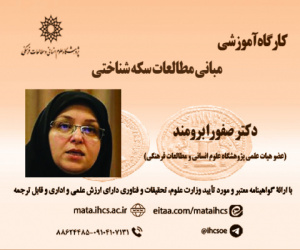آرامش، هویت منظرین خانه های سنتی یزد (مقاله علمی وزارت علوم)
درجه علمی: نشریه علمی (وزارت علوم)
آرشیو
چکیده
کنار ورودی در، دو سکو وجود دارد. جایی برای استراحت چند دقیقه ای رهگذران. یا برای حضور اهالی خانه در ساعت هایی از روز. برای بودن در محیط زندگی اجتماعی یا مطلع شدن از اخبار محله. هشتی اولین فضای داخلی خانه است. حریمی بین بیرون و اندرون. زاویه درب و راهرو به گونه ای است که درون خانه را از دید غریبه پنهان می سازد. حیاط خانه اولین فضایی است که بعد از هشتی، دیده می شود. به فراخور وضع مالی صاحب خانه، حیاط کوچک و بزرگ است، ولی ساختار آن همواره یکی است. حوض کم عمق آب، مربع یا مستطیل، در وسط حیاط و چند باغچه کوچک و بزرگ در اطراف آن. تختی که بر روی حوض خودنمایی می کند. دیوار حیاط بلند است. سه تا پنج متر و شاید بیشتر. خانه در امان است از باد و خاک و سرما و گرما و صدا و نگاه بیرون. دورتا دور حیاط، اتاق است. مقیاس ها متفاوت. با کاربری متنوع. اتاق رو به آفتاب برای زمستان است و تالار یا اتاق پشت به آفتاب برای تابستان. اتاق نشیمن و مهمانی. یکی بادگیر دارد و شاید حوضی کوچک زیر بادگیر. صند وق خانه هایی در گوشه های خانه که کاربری شان بحثی مجزا دارد. آشپزخانه عموماً در فضایی پایین تر از سطح زمین است. با انباری مواد غذایی و هواکش هایی که بوی غذا را به بیرون از خانه هدایت می کنند.فضای زیر زمین هم هویت دارد. برای تابستان یا انبار مواد و البسه و وسایل. و گاهاً مسیر قناتی که خنکای خاصی را هدیه می دهد به اهالی خانه. پایاب قنات هم محل تأمین آب حیاط و خانه است و هم محل نشستن و آرمیدن. ساختار فیزیکی خانه سنتی که در دل کویر بنا نهاده شده، و ترکیب و جانمایی عناصر مختلف آن به گونه ای است که بیش از هر چیز آرامش را هدیه می دهد به ساکنانش. دیوارهای بلند و پهن، مناظر بی نظیر آب و گیاه و فضاهای خلوت و دنج گویا عامدانه به گونه ای طراحی شده اند که منشا آسایش باشند. هم خانه محیطی آرام است و هم اجزایش آرامش دارند.به بیان دیگر، اساساً فضا در خدمت آرامش اهالی خانه است و برای همین طراحی شده است که خانه محلی باشد برای دور کردن خستگی و دست یابی به آرامشی بی نظیر. فضا ایجاب می کند اهالی آرام تر حرف بزنند و حرکت بین اجزا کمتر باشد. اهالی کویر همواره دور از هیاهو بوده اند. این هم دلیلی برای این مدعاست. حتی به نظر می زسد زمان هم آرام تر حرکت می کند تا به حفظ آرامش کمک کند.جالب توجه است در خانه هایی که بازسازی شده اند نیز همین حس در بازدیدکننده تداعی می شود. سکوت کم نظیر، بوی خشت و آب و گیاه، بازی رنگ دیوار و در و طبیعت، حس و حال متفاوتی را هدیه می دهند به گردشگری که در شلوغی شهر به خانه ای رسیده است که آرامش، بخشی از هویت آن است. و این امر باعث شده است هتل ها و مهمان سراهایی که توانسته اند این عنصر را در بازسازی حفظ کنند، مورد اقبال گردشگران قرار گیرند. نگاه منظرین ایجاب می کند، این هویت مورد توجه بیشتری قرار گیرد و از زوایای مختلف بررسی شود. مشخص شود ترکیب چه عناصری باعث این تصویر پرمعنا شده اند و چگونه این هویت بر سایر کارکردهای خانه به معنای خانه تأثیر گذاشته است. هویتی معنایی که بعد از سال ها، حتی در بازسازی فیزیکی نه تنها از بین نرفته است، بلکه در تضاد شلوغی جامعه کنونی، و ریتم تند زندگی، بیشتر جلب توجه می کند.Tranquility, the Landscape Identity of Houses in Yazd
Two platforms are placed at the entrances of houses. Passers-by can use them to rest for a while and the residents of the house can be there during the day to socialize or to be informed about the neighborhood.The vestibule as the first interior space of the house draws a boundary between the outdoor and the indoor. The angle between the door and the hallway hides the indoor from the strangers. The yard is the first space after the vestibule. Aligned with the financial status of the proprietor, the yard can be small or large. However, its structure stays always the same. A shallow pond of water, square or rectangular sits in the middle of the yard surrounded by several small and large gardens. A bed stands out on the pond. The height of the yard wall is between three to five meters or can be more. The house is kept away from wind, dust, cold, heat, noise, and outside view. There are rooms around the yard. They come in different sizes and have a variety of uses. The room facing the sun is for winter and the hallway or room facing the sun is for summer: living room and sitting room or parlor. One has a windshield and maybe a small pond under the windshield. Closets in the corners of the house, whose uses need a separate discussion.The kitchen is generally in a space in the basement where food is stored and equipped with vents that let the smell of food go out.The underground space also has an identity and is used in summer for the storage of materials, clothes, and equipment. Sometimes it shows the path of the aqueduct ( Qanat in Persian) presenting the residents of the house with special tranquility. Qanat water outlet is both a place to supply water to the yard and house and a place to sit and rest.The physical structure of the traditional house is built in the heart of the desert, and the combination and array of its various elements gives its residents a sense of tranquility more than anything else. High and wide walls, unique landscapes of water and plants as well as quiet and cozy spaces seem to be deliberately designed to be a source of comfort. House is a peaceful environment and its components are peaceful.The space serves the peace of the people of the house, and for this reason, the house is designed to be a spot to unwind and experience matchless tranquility. The space requires people to talk more quietly and there is less movement between parts. The people of the desert have always been away from the hustle and bustle of life. That justifies such an alignment. Time even seems to move more slowly to maintain serenity.Interestingly, renovated houses can evoke the same feeling in visitors. The rare silence, the smell of clay and water and plants, the color of the wall and the door, and nature, give a different feeling and mood to tourists who have reached a house amidst the hustle and bustle of the city, where peace is a part of its identity. Those hotels and guesthouses that have been able to preserve this element in the renovation are favored by tourists.The landscape approach demands that this identity be prioritized and scrutinized from different angles. It should be determined what amalgamation of elements has caused this meaningful image and how this identity has affected other functions of the house in the sense of home. A meaningful identity that has not been lost after years, even in the physical reconstruction, but it has attracted more attention in contrast to the busy current society, and the fast rhythm of life.









